Bisbee is a famous mining town, once a major source of copper metal. The area was discovered as a copper rich area with potential for mining in 1877 by an army scout searching the area for Apaches. Claims were staked shortly afterwards. Rich deposits of copper oxide minerals were subsequently discovered, mining companies formed, capital raised and copper mining and smelting started. The orebodies were rich, colourful masses of secondary minerals such as azurite, malachite and cuprite, as oxidized replacement masses associated with hematite, goethite and calcite.

Like any frontier mining town, early organization was sparse. Mines, homes, and other facilities were crammed into canyons, higgledy-piggledy and Bisbee just "happened". After more than 100 years of mining, there are, now, no mining operations left. There is evidence of the old mines and ore extraction everywhere, in Town, though. Today, Bisbee is a town of artists, retired people and various tours and experiences to do with mining and minerals.
The Bisbee Museum is full of great old photographs, text and artifacts relating the fascinating history of the town/city. It is easy to get a sense of history and the impact that Bisbee had on Arizona, the USA and the world, as you make you way through the various historic exhibits.

I was impressed by the mineral collection housed at the Museum. I recall visiting the museum many years ago when lighting was bad and dust formidable. Not so, now. The fantastic mineral specimens are housed in modern, dustless, well lit cases with excellent labelling. Here are examples of some of the great mineral specimens you can see if you visit the museum.

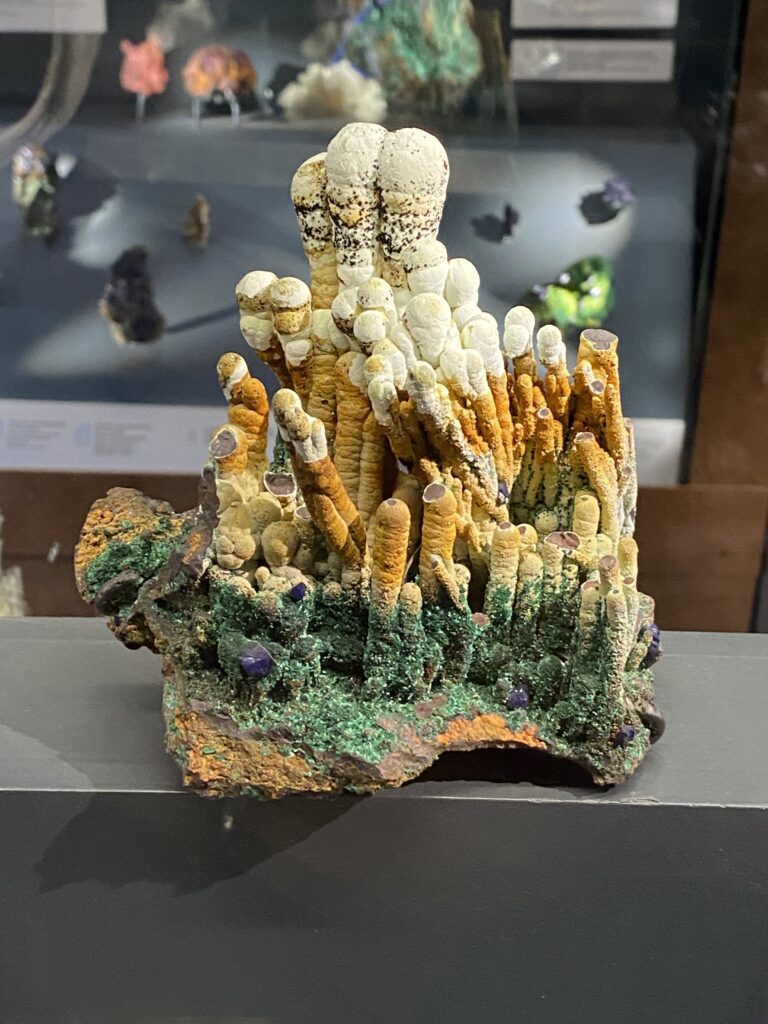
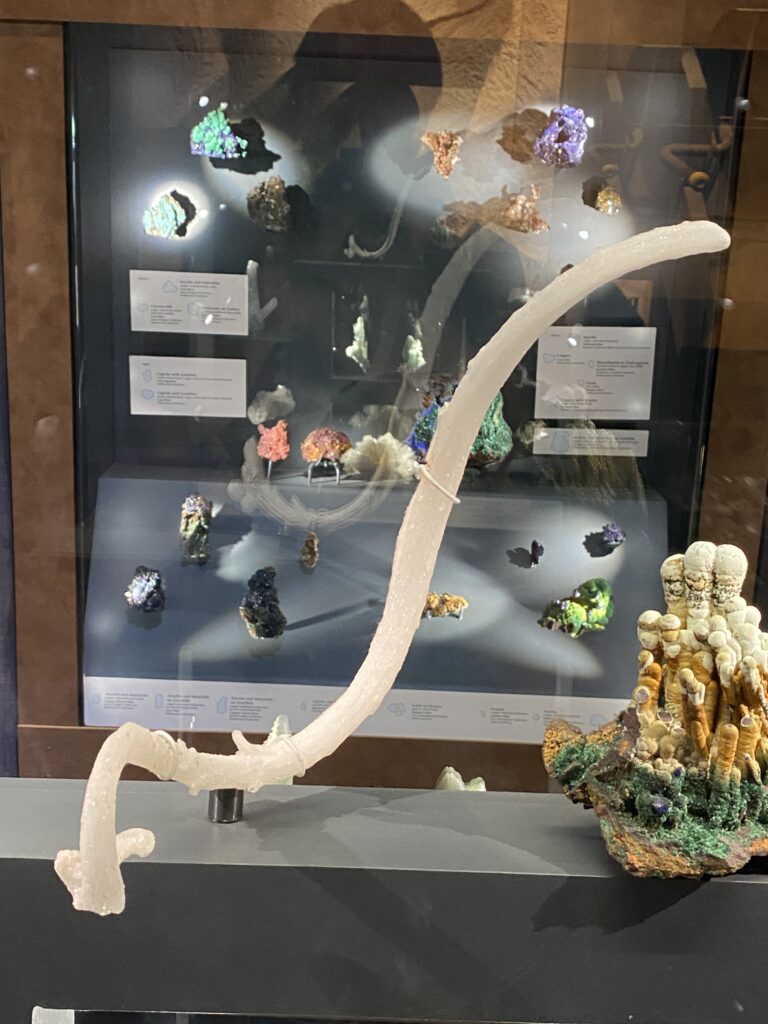
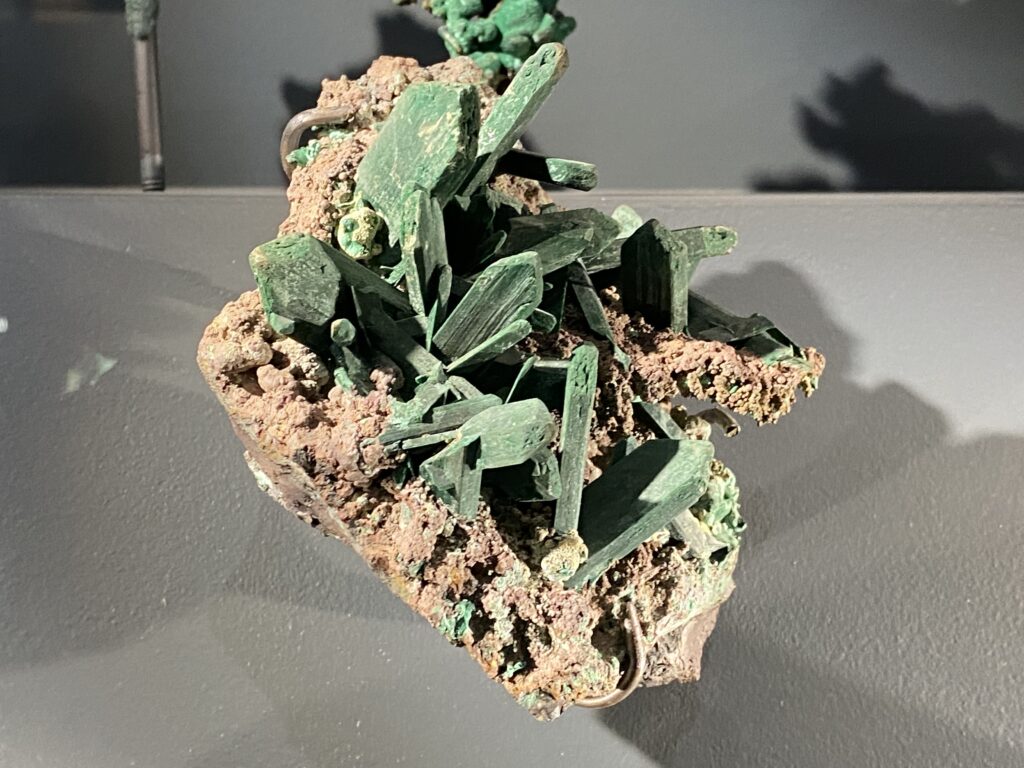
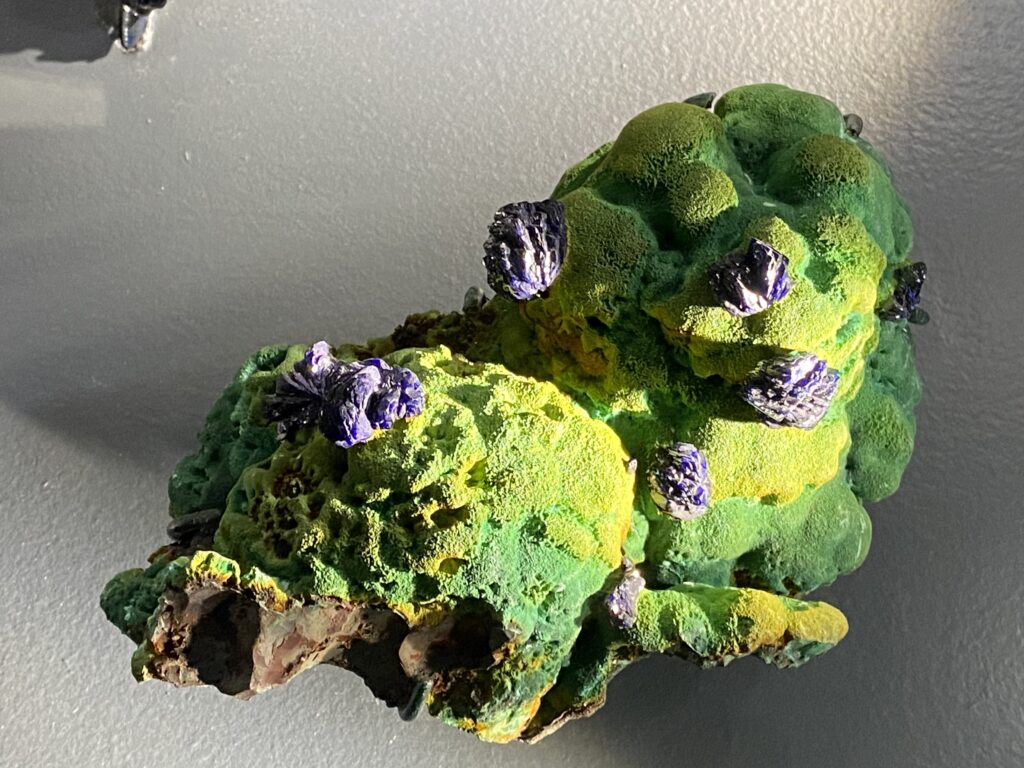

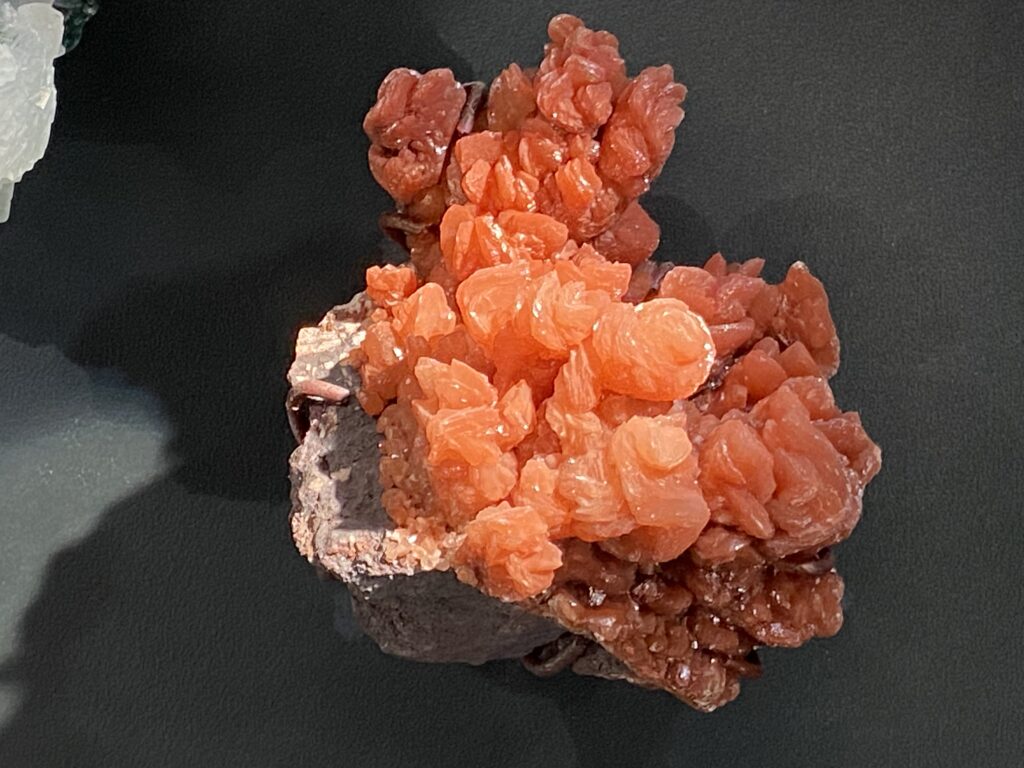



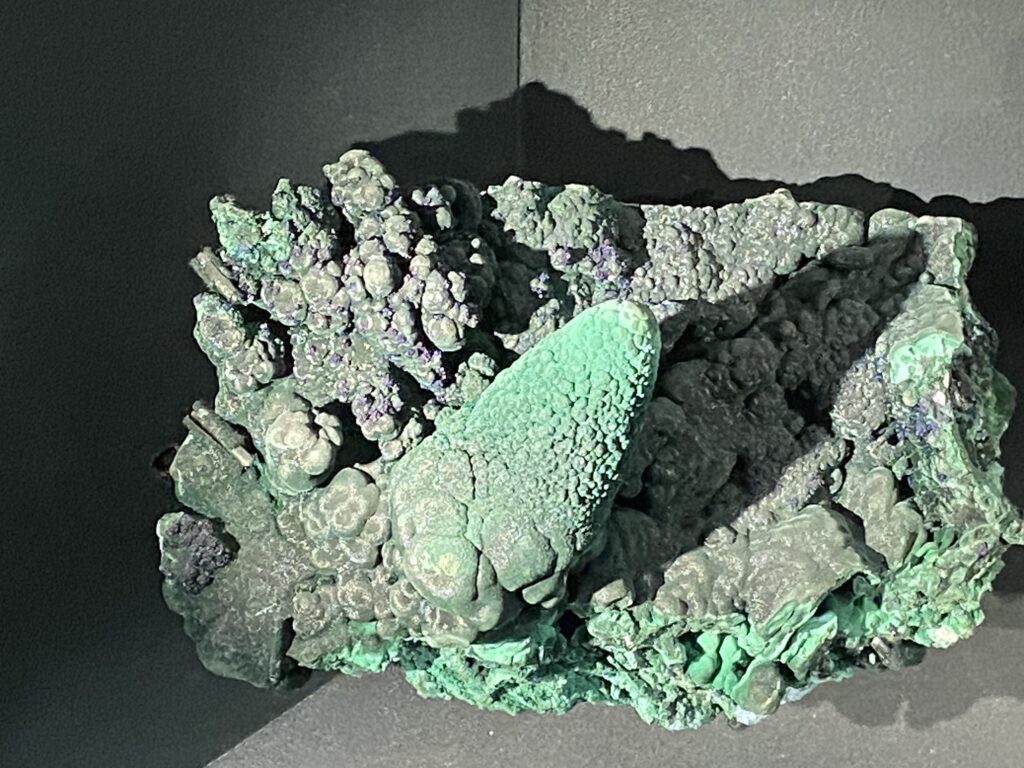
There is a small sample of the great specimens of malachite on display at the Bisbee Mining and Historical Museum. They are just "phone photos" but hopefully you get the idea?! For more and a great day or so of other activities, head to Bisbee, AZ, USA